In 1993, FIFA International Soccer was the first offshoot of the FIFA series for the Sega Mega Drive and computer systems with MS-DOS. Just one year later, the first edition was ported to other stationary and, for the first time, mobile game consoles and marked the start of the early years of the football series.
Table of contents
- 1 C: B_retro Ausgabe_84
- FIFA Soccer and other soccer pioneers
- C: B_retro Ausgabe_84 FIFA_Soccer
- FIFA International Soccer (1993)
- FIFA Soccer 95 (1994)
- FIFA Soccer 96 (1995)
- FIFA 97 (1996)
- FIFA: Road to World Cup 98 (1997)
- FIFA 99 (1998)
- FIFA 2000 (1999)
- FIFA 2001 (2000)
- C:B_retroAusgabe_84FIFA_SoccerDie_Konbewerb
- International Superstar Soccer (1995 – 2000)
- Pro Evolution Soccer (2001 – today)
- C:B_retroFeedback
- Feedback is always welcome
- C: B_retro Review
- The last ten issues in an overview
C: B_retro Ausgabe_84
FIFA Soccer and other football pioneers
On December 5, 1993, the developers of Extended Play Productions and the sports game division EA Sports from publisher EA published FIFA International Soccer, a very young star in the sports simulation sky, which was to find its way to the PC in the same year. In addition to the newly founded FIFA series, Pro Evolution Soccer also entered the green field.
C: B_retro Ausgabe_84 FIFA_Soccer
FIFA International Soccer (1993)
After the first part of the series, FIFA International Soccer, first appeared exclusively for the Sega Mega Drive in 1993 and also for the DOS PC towards the end of the year, ports for home computers from the Commodore Amiga, the Sega Game Gear and the rare Sega Mega-CD as well as the Nintendo Game Boy and the Super Nintendo Entertainment System.
 The first edition of FIFA International Soccer for the Sega Mega Drive (Image: EA)
The first edition of FIFA International Soccer for the Sega Mega Drive (Image: EA) The sports game was also released for the 3DO Interactive Multiplayer, an early 32-bit game console of the The 3DO Company, which was insolvent and subsequently broken up in 2003, used 3D graphics with a future-oriented SVGA resolution for the first time.
Simple 2D sprites in an isometric perspective were used on the PC and the Amiga as well as all other game consoles. On the PC, the series only switched to 3D graphics three years later with FIFA Soccer 96. The YouTube channel “GameClub” presents the gameplay from 1993.
The following system requirements had to be met on the PC for the first part of the FIFA series:
- Intel i486 DX with 33 MHz (or comparable)
- 4 megabytes of RAM (8 megabytes recommended)
- 8 megabytes of free hard disk space
- Double-Speed CD-ROM drive
- VGA-compatible graphics card
< li> MS-DOS 5.0 (or higher)
In particular, the comments and video sequences as well as the CD music require a comparatively large amount of RAM and require at least 8 megabytes of RAM .
On the cover of FIFA International Soccer are the 62-time England international David Platt, who played for Juventus Turin and Arsenal London, among others, and the Polish international Piotr Świerczewski, who was active in France at AS Saint-Etienne at the time see.
In FIFA International Soccer, players could only compete against each other with a selection of 78 national teams. Due to the FIFPro license, the first part could partially fall back on real player names.
With more than 300,000 units sold in Europe alone, FIFA International Soccer was a great success for EA and the EA Sport division, laying the foundation for one of the most successful computer game series ever.
FIFA Soccer 95 (1994)
On November 10, 1994, FIFA Soccer 95 was the first sequel to the FIFA series and expanded its predecessor for the first time to include club teams and international leagues. The scope included 64 national teams, 8 soccer leagues and 154 soccer teams licensed by FIFA.
The gameplay was largely retained, but faster and upgraded with better enemy AI . The 2D sprites also had better animations and the sound was improved.
On the cover of FIFA Soccer 95 you can see the former Norwegian national goalkeeper and 97-time national player Erik Thorstvedt, who was playing for Tottenham at the time and was also active in Germany for Borussia Mönchengladbach in the 1980s.
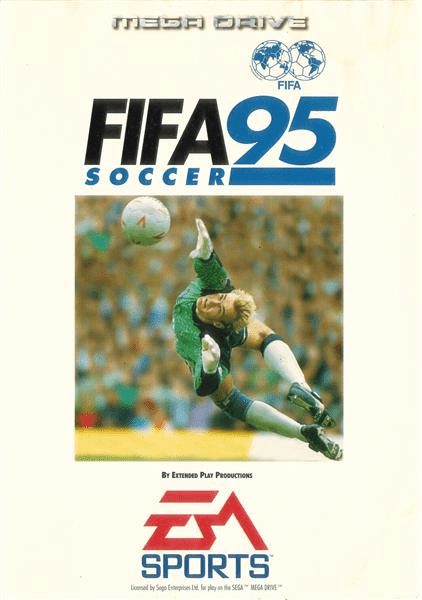 FIFA Soccer 95 for the Sega Mega Drive (Image: EA)
FIFA Soccer 95 for the Sega Mega Drive (Image: EA) FIFA Soccer 95 was released exclusively for the Sega Mega Drive and is the only part of the series that was not released for the PC. For the first time, the Brazilian version contained an online mode that could be used via Sega Mega Net 2.
The corresponding gameplay, which very nicely demonstrates the faster game setup, is provided by YouTube -Channel “igcompany”.
The great economic success of FIFA Soccer 95 prompted EA to port the successor to as many platforms as possible.
FIFA Soccer 96 (1995)
On November 30, 1995, FIFA Soccer 96 appeared on the Sega Mega Drive and the successor Sega Saturn and the first Sony PlayStation.
In the same year ports for the SNES, the Sega Game Gear, the Sega 32X and the Game Boy from Nintendo appeared. For the first time, the PC version for MS-DOS and Windows also relied on 3D graphics, revised animations and a higher SVGA resolution.
Thanks to the licenses, the game could FIFA and FIFPro as well as various national leagues have access to more than 3,000 real players.
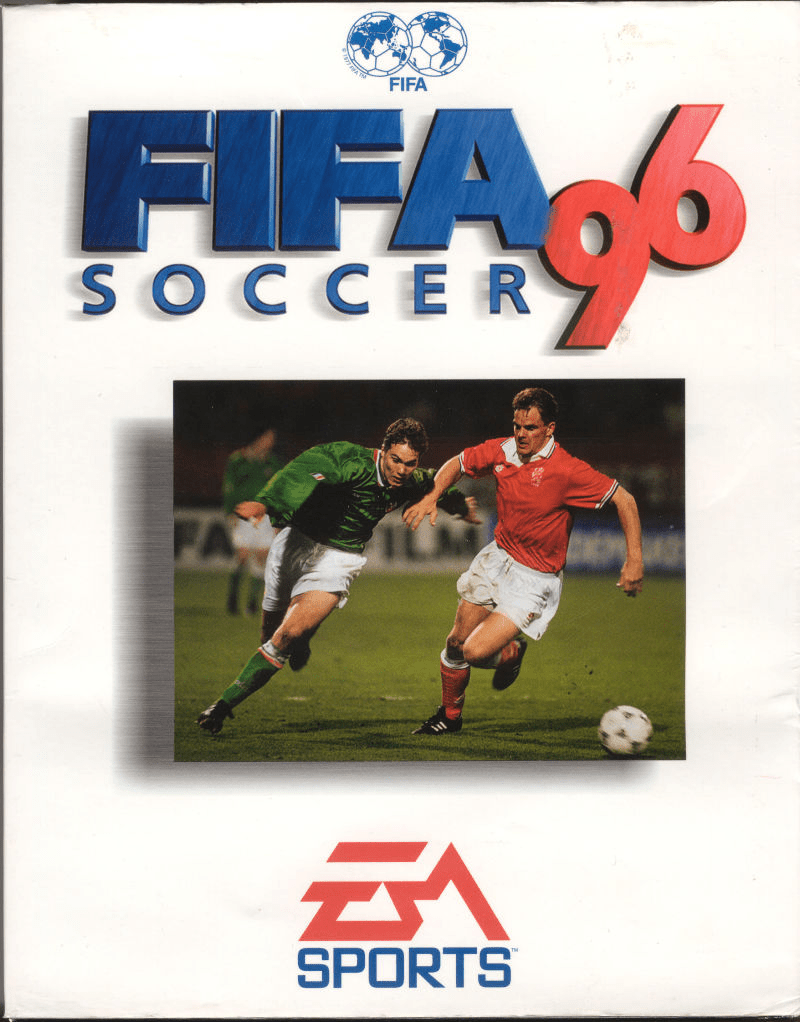 FIFA Soccer 96 was also released for the PlayStation (Image: EA)
FIFA Soccer 96 was also released for the PlayStation (Image: EA) Due to the technical limitations of the handheld, the version for the Nintendo Game Boy still had to make do with 2D sprites, as a gameplay video on the YouTube channel “World of Longplays” shows.
With its real-time 3D graphics and greatly improved animations, FIFA Soccer 96 represented the first big step in the series and once again sold extremely well. In the meantime, FIFA Soccer had become the best-selling sports game.
FIFA 97 (1996)
After FIFA International Soccer and FIFA Soccer, publisher EA Sports made the next change to the nomenclature of the series in 1996 with FIFA 97, which is still valid today.
The cover of FIFA 97, which was published for the same platforms as its predecessor, shows the former French football game David Ginola, who earned his bread and butter in the English Premiere League at Newcastle United.
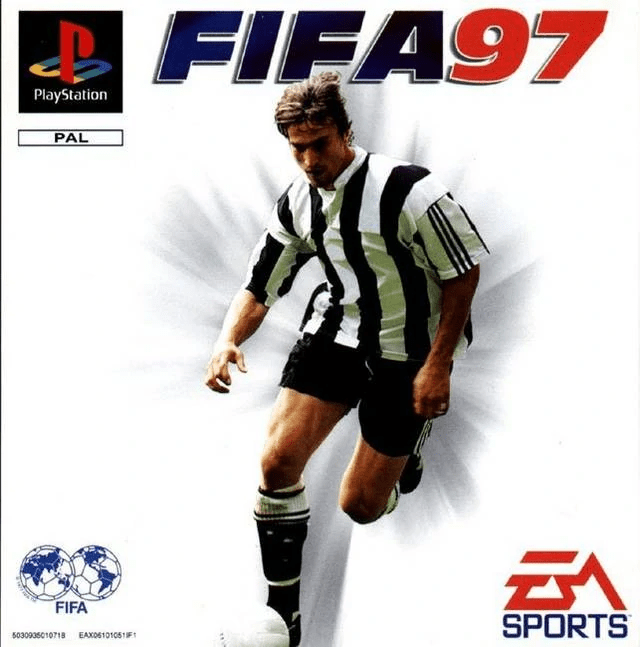 FIFA 97 for the PlayStation (Image: EA)
FIFA 97 for the PlayStation (Image: EA) For the first time ever, FIFA 97 also offered an indoor mode in which players could compete against each other on the small field with a smaller number of players. The graphics were also significantly revamped, especially on the PC and the PlayStation, and had a higher number of polygons.
< p class = "p text-width"> With FIFA 97, more and more complex moderations and comments found their way into the FIFA series, whose license for original player and team names continued to grow.
FIFA: Road to World Cup 98 (1997)
In June 1997, FIFA: Road to World Cup 98 was the first offshoot of the series, which was based directly on a major international event, the 1998 World Cup in France.
The focus was on qualifying for the World Cup tournament and new stars and players such as the French world-class player and three-time world footballer Zinédine Zidane and the future British world star David Beckham, who also graced the official cover of the game.
 FIFA: Road to World Cup 98 (Image: EA)
FIFA: Road to World Cup 98 (Image: EA) 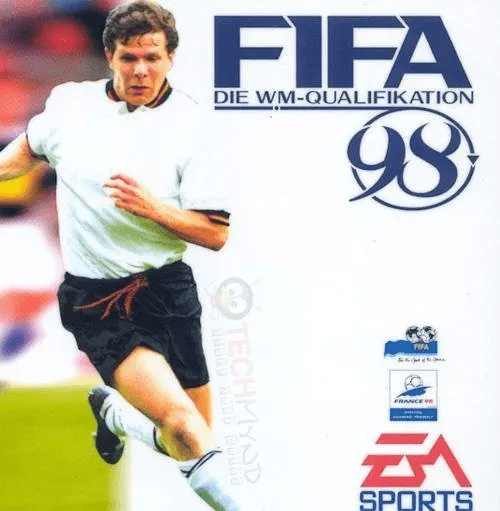 FIFA: Road to World Cup 98 (Image: EA)
FIFA: Road to World Cup 98 (Image: EA) The German international Andreas Möller was able to immortalize himself on the German edition. For the first time ever, motion capture using motion capture was used over a large area, which made the game more realistic.
The indoor mode and the German commentators also received product updates and were once again significantly expanded , as demonstrated by the high-class match between the big soccer nations San Marino and the Philippines.
FIFA 98 was also able to benefit significantly for the first time from 3D accelerators with graphics processors of the type 3dfx Voodoo and 3dfx Voodoo 2 and only display certain effects on these.
FIFA 99 (1998)
With the 52-time German national player Olaf Thon on the cover of the local version and the Dutch selection player Dennis Bergkamp on the North American edition, FIFA 99 introduced international cup competitions such as the UEFA Cup and the UEFA Champions League in particular.
< figure class = "image__wrap" style = "max-width: 460px"> 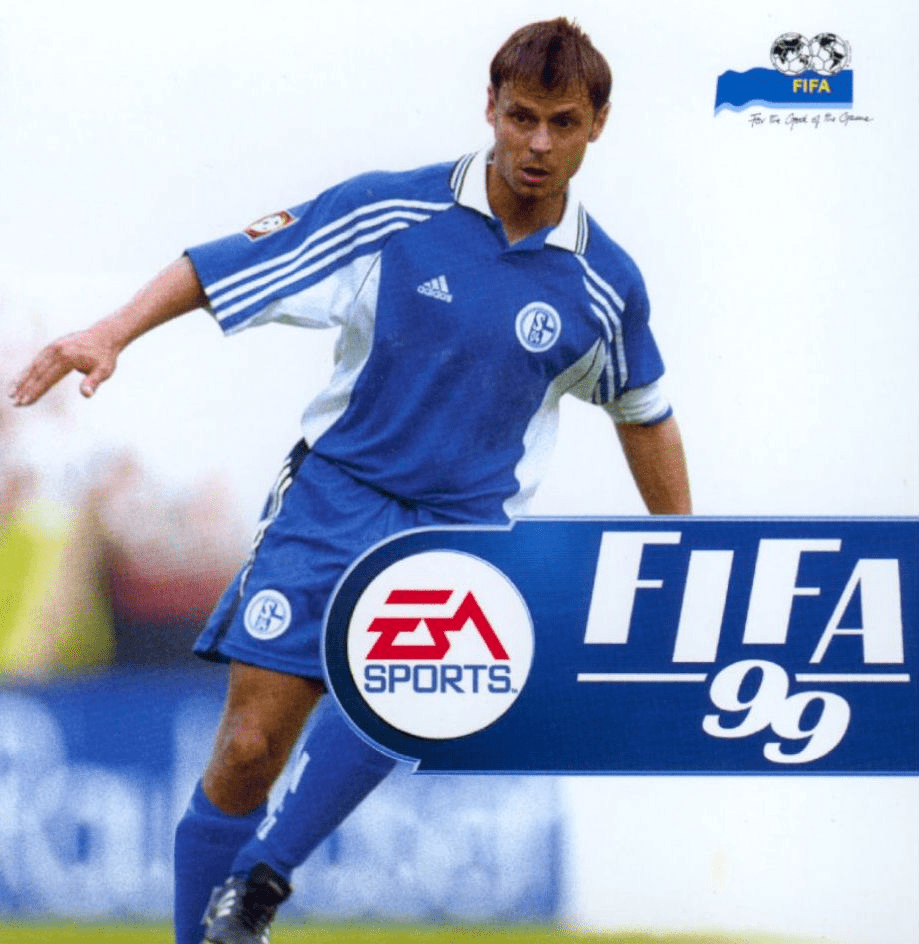 FIFA 99 (Image: EA)
FIFA 99 (Image: EA)
EA Sports improved the graphics and animations again and focused even more on motion capture, for which top international players made themselves available. FIFA 99 was released for the Windows PC, the Sony PlayStation and the Nintendo 64. Older and less powerful platforms such as the Sega Mega Drive and the Game Boy, however, were no longer supported.
Thanks to new game modes and multiplayer, FIFA 99 became the most popular offshoot of the FIFA series until then and was able to bring in more than 50 million euros in Europe alone. The game sold around 250,000 times in Germany alone.
FIFA 2000 (1999)
With a very prominent soundtrack by the British singer and entertainer Robbie Williams and Sol Campbell as well as Mehmet Scholl from FC Bayern Munich on the cover, FIFA started the new millennium in 1999 with FIFA 2000.
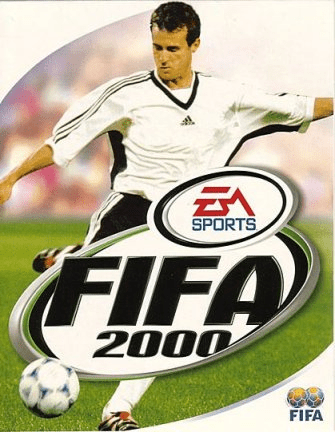 FIFA 2000 ( Image: EA)
FIFA 2000 ( Image: EA)  FIFA 2000 (Image: EA)
FIFA 2000 (Image: EA) For the first time also for the Game Boy Color launched, FIFA 2000 was also released in October 1999 for Windows PCs and Sony PlayStation and made another significant step forward in terms of graphics. In addition to the FIFA license and the approval of FIFPro and the national football associations, the American Major League Soccer also found its way into the FIFA series for the first time.
Of course, significant compromises had to be made on the Game Boy Color, as a Let's Play by “Mariofan98” shows.
In FIFA 2000, players were also able to compete against each other for the first time in a classic mode with a total of 40 classic teams, consisting of football legends who had resigned from the past. The national soccer leagues of Denmark, Greece, Israel, Norway and Turkey were also new.
FIFA 2001 (2000)
With FIFA 2001, which was also published for the first time for the PlayStation 2 presented in March 2000, the modern age of the FIFA series begins, which is especially due to the greatly improved graphics of the PC version and on the PlayStation 2 became clear. Record national player Lothar Matthäus was enthroned on the cover at the time.
 FIFA 2001 (Image: EA)
FIFA 2001 (Image: EA) FIFA 2001, which was released on October 30, 2000 for the Windows PC and on November 24, 2000 for the PlayStation 2, was based on a new graphics engine, which for the first time had an individual graphics kit for each team and enabled detailed faces.
FIFA 2001 also has significantly improved teammate and opponent AI as well as more realistic ball physics. For the first time, multiplayer games on the Internet were also possible on the PC.
The further improved motion capture by means of motion capture was realized with the help of players such as Edgar Davids, Filippo Inzaghi and Paul Scholes. In addition to the PC and the PlayStation 2, a graphically slimmed-down version for the first PlayStation was also offered. A version for the Game Boy Color, however, was canceled shortly before the release.
C: B_retro Ausgabe_84 FIFA_Soccer Die_Konbewerb
International Superstar Soccer (1995 – 2000)
Also in 1995 Konami published the soccer simulation International Superstar Soccer (ISS), the forerunner of today's FIFA competitor Pro Evolution Soccer, for the Super Nintendo Entertainment System, the Game Boy and the PlayStation.
The revised International Superstar Soccer Deluxe followed in 1996 for the Super Nintendo Entertainment System, the Game Boy and the PlayStation and, for the first time, for the Sega Mega Drive. In Japan the series ran under the original title “Winning Eleven” and was also very successful.
ISS Pro, ISS Pro 98 and ISS Pro Evolution followed until 2000 and ISS Pro Evolution 2 four more titles in the series before Konami decided to reboot and rename the series. The Nintendo 64 was also operated with ISS 64.
Pro Evolution Soccer (2001 – today)
In October 2001, Pro Evolution Soccer, the first part of the new series, which was still run as Winning Eleven 5 in Japan, was released exclusively for the PlayStation and PlayStation 2. To this day, the two series are in the favor of the players and have been dueled built their very own following.
C : B_retro Feedback
Feedback is always welcome
The editors are happy to receive constructive criticism, praise and suggestions in order to be able to align the series even more closely to the wishes of the readership in the future. With this reading material in their luggage, the editors wish you a relaxing Sunday.
C: B_retro Review
The last ten issues in the overview
Here you can find the last 15 topics of the previous issues of C: B_retro :
- C: B_retro Edition_83 : Hercules 3D Prophet 4500 with PowerVR Kyro II
- C: B_retro Edition_82 : ComputerBase builds the perfect Voodoo-2- Retro PC
- C: B_retro Ausgabe_81 : The first graphics cards from the ComputerBase community
- C: B_retro Issue_80 : The early history of the graphics card
- C: B_retro Issue_79 : Nokia Communicator
- C: B_retro Issue_78 : The first Microsoft Xbox
- C: B_retro Edition_77 : The Sinclair ZX81
- C: B_retro Edition_76 : The perfect gaming PC for 1999
- C: B_retro Issue_75 : The first MacBook Pro with Intel Core Duo
- C: B_retro Issue_74 : Star Wars: Knights of the Old Republic
- C: B_retro Issue_72 : A look at the history of the PC benchmarks
- C: B_retro Issue_71 : The Nintendo GameCube
- C: B_retro Issue_70 : The Sega Game Gear
- C: B_retro Issue_69 : The Legend of Zelda
- C: B_retro Issue_68 : The Nintendo Entertainment System
- C: B_retro Issue_67 : Microsoft Windows 98
- C: B_retro Issue_66 : The Sega Saturn
Even more content of this kind and many more reports and Anecdotes can be found in the retro corner of the ComputerBase forum as au ch in the subject areas C: B_retro and Retro.